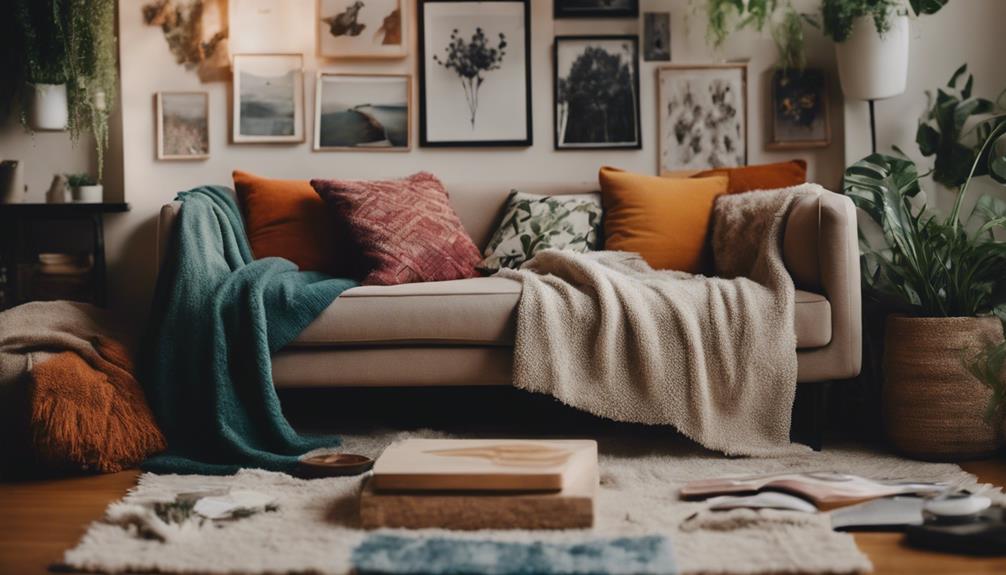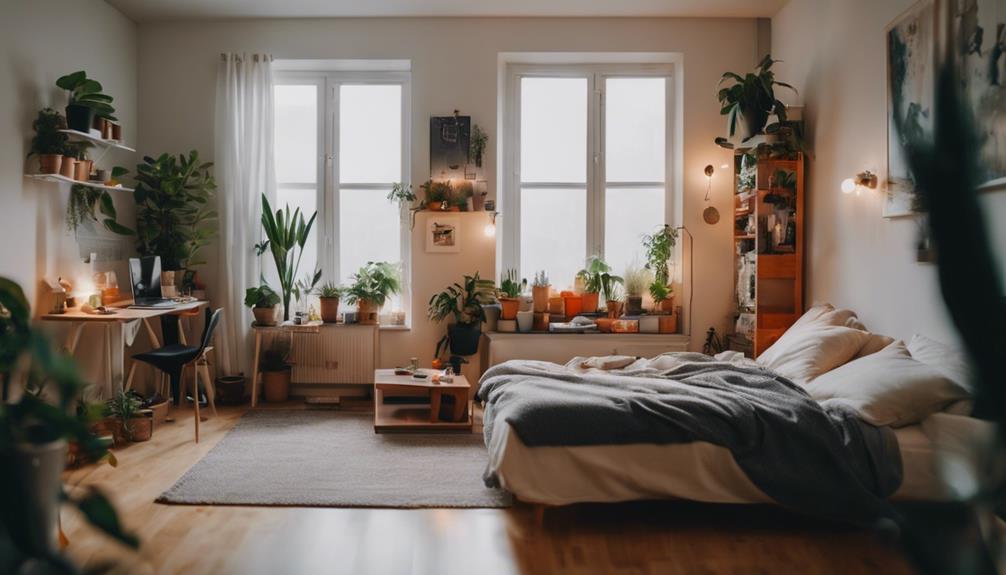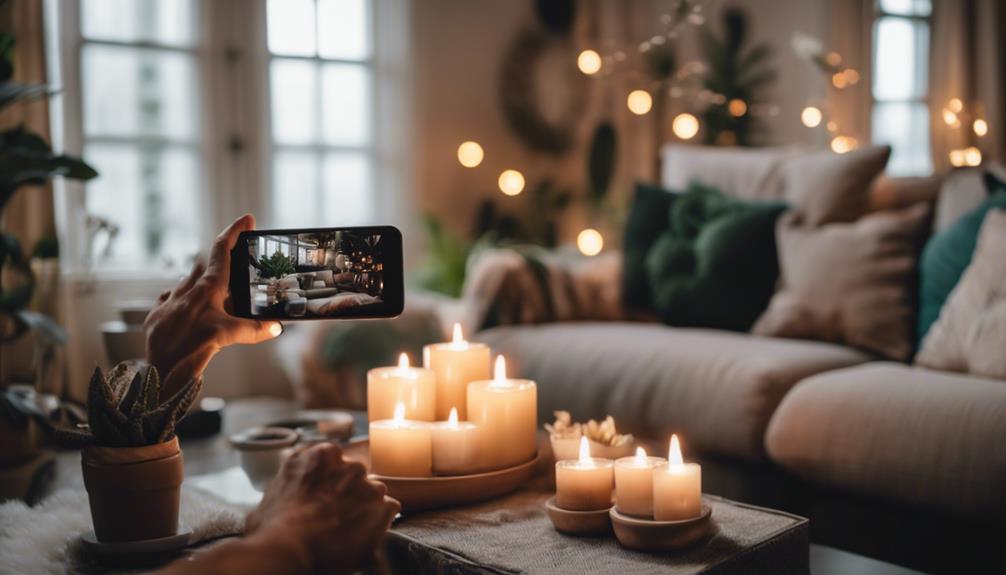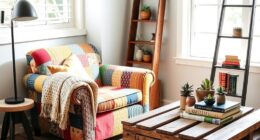Create your dream home decor mood board in just a few simple steps! Define your vision, gather inspiration, and choose elements like colors and textures. Visualize the ambiance and carefully select a color palette to set the mood. Use tools like GoMoodboard and Canva for easy creation. Curate images of fabrics and furniture to refine your design for a luxurious living room. With the right blend of colors and textures, bring your dream design to life! Explore more tips to enhance your design vision and create stunning mood boards that capture your style and sophistication.
Key Takeaways
- Define your vision and concept for the mood board.
- Gather inspiration from various sources like magazines and online platforms.
- Choose design elements such as colors, textures, and furniture pieces.
- Visualize emotions, themes, and ambiance you want to convey.
- Contemplate a carefully curated color palette to reflect the desired mood.
Understanding Mood Board Essentials
Understanding mood board essentials involves grasping the fundamental components that make up these visual tools in home decor design. When creating mood boards for interior design, it's important to understand that they're more than just a collage of pretty pictures.
A mood board is a visual representation that helps you form a cohesive design concept and set the tone or atmosphere for your space. To effectively design a mood board, you need to carefully select images, colors, textures, and materials that align with your vision.
Practical tips for creating mood boards include defining your design concept, curating visuals that inspire you, incorporating a color palette that reflects the desired mood, and seeking feedback to make sure your board effectively conveys the intended design direction.
Benefits of Mood Boards in Design
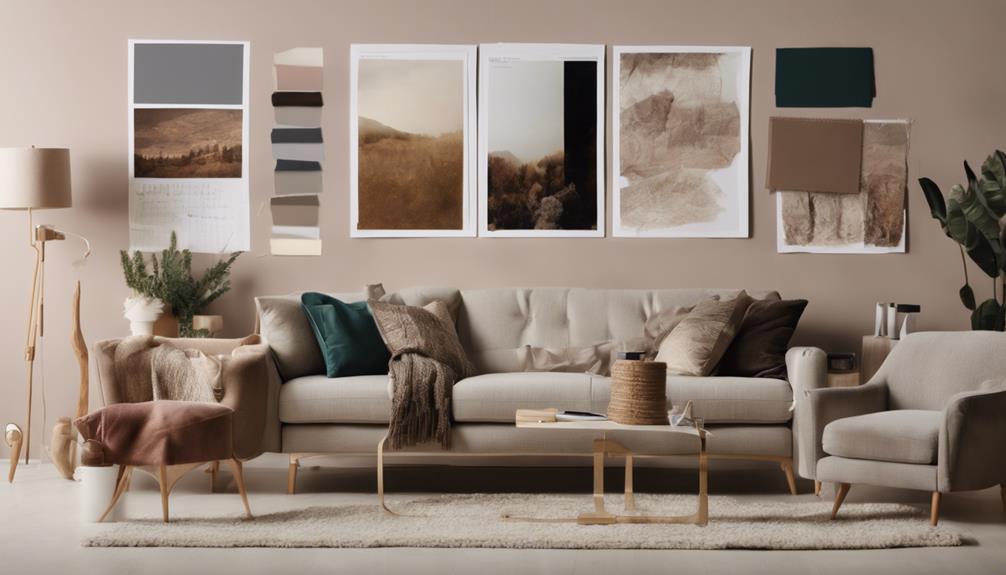
Utilizing mood boards in design allows you to streamline decision-making processes and effectively visualize your design ideas in a cohesive manner.
When creating a mood board for an interior design project, you benefit from selecting cohesive color schemes, experimenting with textures, and defining overall room aesthetics. These visual references serve as a roadmap for the design process, aiding in communication between clients and designers.
By providing a tangible point of reference, mood boards assist in making informed design decisions and setting realistic expectations for the final outcome. Designers find that mood boards play a significant role in creating cohesive and well-thought-out room designs, enhancing the overall design journey.
Embracing mood boards in your design process can lead to more efficient decision-making, clearer communication, and ultimately, a more successful and visually appealing end result for your home decor project.
Steps to Create a Mood Board
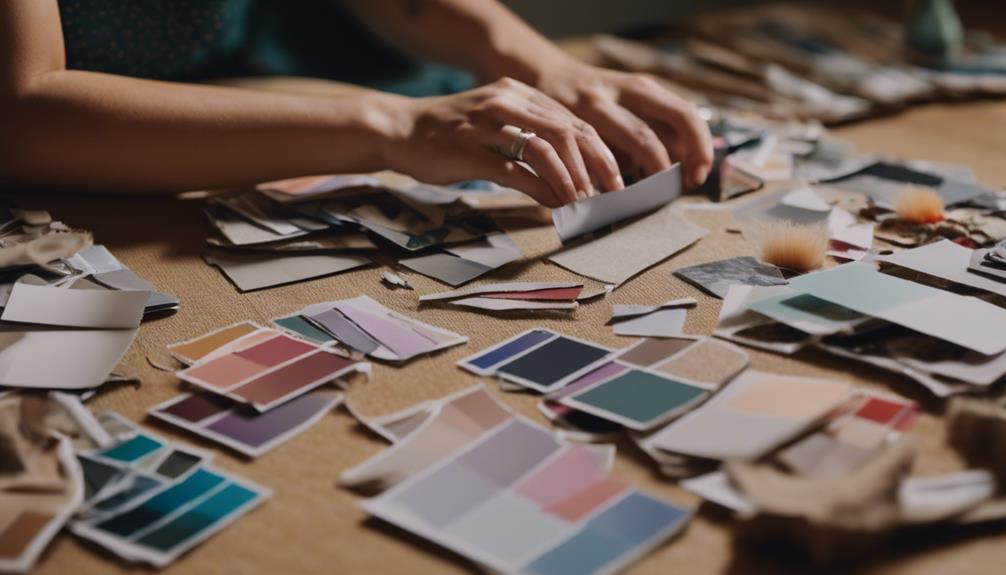
To craft a mood board for your home decor project, start by defining your vision and concept. Gather inspiration from sources like magazines, websites, and social media to spark your creativity.
Decide whether to create a physical or digital mood board based on your preference. Choose design elements such as colors, textures, and furniture pieces that resonate with your vision. Experiment with various combinations to find the best match for your room.
When crafting your mood board, focus on visualizing emotions, themes, and overall ambiance to bring your design to life. Remember to contemplate your color palette carefully as it sets the tone for the entire space.
Whether you're a DIY enthusiast or collaborating with an interior designer, the process of crafting a mood board is crucial for a successful home decor project.
Top Tools for Mood Board Creation

Discover user-friendly online tools like GoMoodboard and Pinterest that can simplify the creation of digital mood boards for your home decor projects. These platforms offer a seamless process for interior designers and DIY enthusiasts to curate visual inspirations for specific rooms like your living room.
GoMoodboard provides a straightforward interface for creating mood boards, while Pinterest acts as a vast repository of images to kickstart your creative journey. Experienced interior designers often use Foyr Neo for its advanced features and templates that enhance the design vision on mood boards.
Additionally, specialized platforms, tools like Canva, PowerPoint, and Keynote also help in crafting aesthetically pleasing mood boards. Canva's versatile design options cater to various styles, while PowerPoint and Keynote offer professional customization for creating detailed boards.
Utilizing Google Images can supplement your mood board creation by providing a wide array of visual references to enrich your design concepts. These top tools are essential in translating your ideas into visually appealing mood boards for your home decor projects.
Enhancing Design Vision With Mood Boards
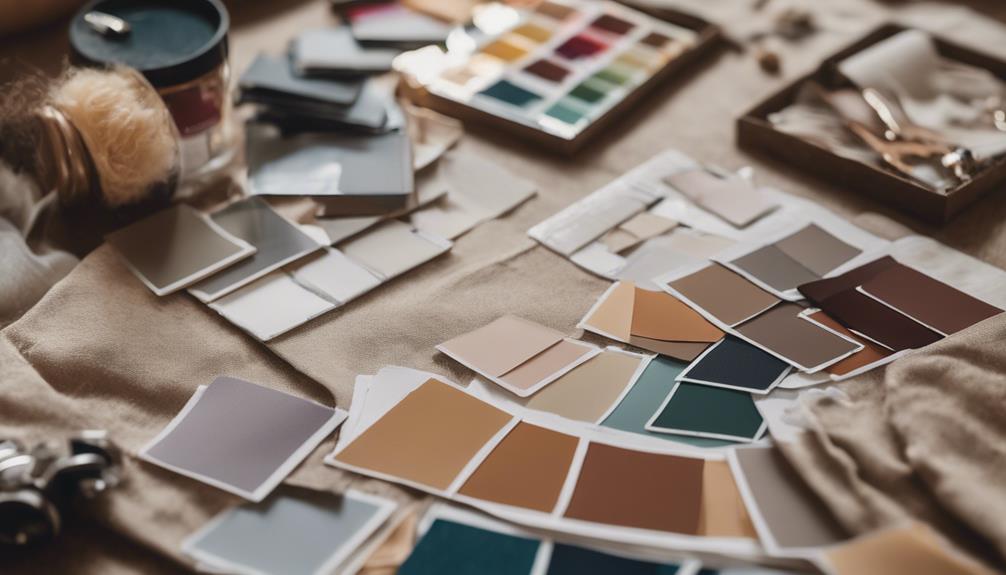
Enhancing your design vision with mood boards involves visually representing design concepts through images, colors, textures, and materials. Mood boards play a significant role in helping you create a particular mood or style for your living space.
When designing a luxury living room, a mood board for interior design is best for creating a cohesive look. This board allows you to gather inspiration, experiment with different elements, and envision how they come together in a real room setting.
By curating images of opulent fabrics, elegant furniture pieces, and rich color palettes, you can refine your design vision and guarantee that every detail contributes to the overall luxurious feel of the space.
Whether you aim for a classic and timeless aesthetic or a more contemporary and eclectic vibe, a well-crafted mood board will guide you in bringing your dream living room to life with style and sophistication.
Frequently Asked Questions
How Do I Make a Mood Board for My House?
To make a mood board for your house, select images reflecting your design style and color scheme. Include furniture, decor pieces, textures, and patterns. Use tools like Canva or Pinterest to create a visual roadmap for your project.
How Do You Make a Vision Board for Decorating?
To make a vision board for decorating, gather inspiration from sources like magazines and websites. Curate images that reflect your design vision, experiment with options, explore color schemes, and refine your concept before implementation.
How Do You Present an Interior Design Mood Board?
To present an interior design mood board effectively, organize images, colors, and textures in a cohesive layout. Clearly explain your design choices and inspirations to convey the vision. Engage your audience with visual storytelling for impact.
How to Create a Concept Board in Interior Design?
To create a concept board in interior design, define your concept, choose a platform, gather inspiration, curate visuals, and present your final design plan. It serves as a visual guide, aiding decision-making and ensuring a cohesive design process.
Conclusion
Now that you have learned how to create a home decor mood board, it's time to bring your design dreams to life! By visualizing your ideas, you can stay focused on your vision and make informed decisions when decorating your space. By seeking out home decor inspiration from magazines, websites, and social media, you can gather ideas and find the perfect pieces to bring your vision to life. Whether it’s a specific color palette, a particular style, or a unique feature, there is endless inspiration out there to help you create the home decor of your dreams. Remember to keep adding to your mood board as you find new inspiration, and share it with friends and family to get their feedback and ideas as well.
Don't be afraid to experiment and get creative with your mood boards – they're a powerful tool to help you achieve the home of your dreams. Let your imagination run wild and watch your design ideas come to life!
